(yellowish/green), indicating this is the "deluxe" model.
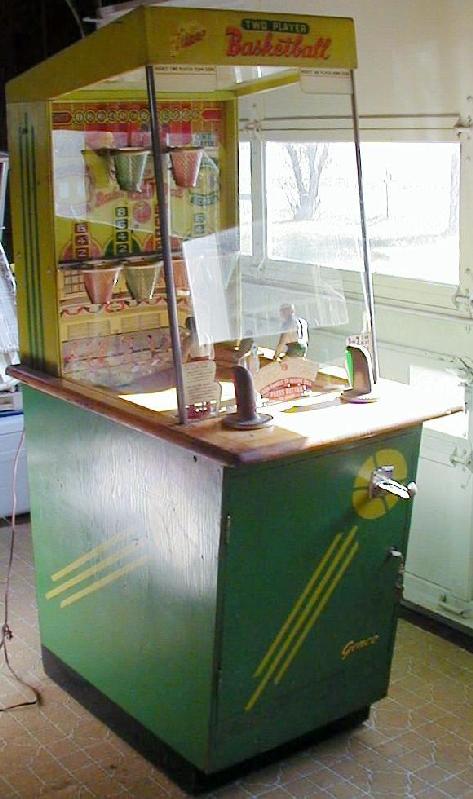
|
Description: 2 Player Basketball, Genco, 3/54, two players, manikin players, game comes three ways (Novelty, Deluxe, Super). Novelty has no match or replay function, Deluxe has a match function (win one credit), and Super has a match and a replay setting (allowing up to 16 credits to be won). Each version is easy to identify at a glance based on the main background backglass color. (The Super version has a red background behind the words "basket ball" on the score glass, the Deluxe version is a yellowish-green, and the Novelty version is a light blue. Note there was a reissue version of the backglass made which has a credit window for the "Super" version, but it was made with a light blue ("Novelty" verison) background.) Please contact me if you have a Genco Two Player Basketball for sale at cfh@provide.net Click here for a 15 second MPG movie (1.3meg) of a Genco 2 Player Basketball being played in two player mode. Genco 2 Player Basketball Game Play: Each player alternates shots, as balls are automatically fed to the players from the center ball tube. If player is not turned to collect the ball from the loading tube, the shot dribbles by and is lost. Green player (home) shoots at the green baskets, while the red player (visitor) shoots for the red baskets. Points for the lower baskets change value from two, four, six or eight points (backglass lights indicate basket's value). If the home player scores in a visitor's basket, points go to the visitor's score! The upper baskets are worth 10 points, but only when randomly lit (if not lit, they score no points). When upper baskets are lit, a buzzer energizes in addition to the backglass lights. When the lower basket scores, a bell rings (does not ring for the upper baskets!) Game can be played as one or two players. In a one player game, the visitor team is spotted 30, 40, 50 or 60 points at game start, and again if the home player hits the visitor's basket, visitor points are scored. If the game is the "Super" version, in one player mode beating the visitor's score may earn a free game (not sure about that). Each player gets 12 shots, with no option for additional shots (game time is set at about one minute for a one player game, two minutes for a two player game). The basketball floor is made of thin adhesive cork with silkscreen red line printing showing the "lane". Back graphics are a curved cardboard arena scene. There is a lock out system for the players; when the game is over, the players can not turn (or when game is in one player mode, the visitor player is locked). The balls used are white hollow exactly 1.5" (38mm) plastic balls, heavier than ping-pong balls (ping-pong balls don't work, due to their light weight and 35mm or 40mm size). A minimum of ten balls are needed for the game to play (barely), but 12 balls should be installed (12 balls are really needed because the balls stack inside the center ball feed tube, and without at least ten balls, the balls will not feed to the players). The game came from the factory with 14 balls, but only 12 are used (the other two were extras). Other Genco games also used this same ball, such as the 1955 Champion Baseball, the 1956 Hi-Fly Baseball, and the 1957 Quarterback. Genco Two Player Basketball uses two canopy 17.5" long 60 watt "Lumalites" (florescent looking incondescent lights). These Lumalites have round ends with special adaptors (usually missing, and very difficult to find - see here). Bulbs are really no longer available, but can be bought in Canada at Canadian Tire for about $6 each ($9 CAD). Behind the curved cardboard background there is also a 25 watt 110 volt standard appliance lightbulb. For backglass lighting, #44/47 bulbs are used, except for twelve #1458 twenty volt bulbs (which are nearly impossible to find) for the eight middle basket score value lights (2/4/6/8 point lights), and the four top basket lights. Suitable replacements are #1818 bulbs (24 volts, 4 watts) or #313 bulbs (28 volts, 4.76 watts). Genco games operate on 18 volts DC for the solenoids, hence some bulbs are energized by the game's 18 volts instead of the 6.3 volt General Illumination circuit. A simple modification can be to change the lower baskets' eight #1458 bulbs to #47 bulbs (picture below), by adding one wire and disconnecting a pair of wires from the lower eight bulb wire buss. The upper basket lamps can not be converted unfortunately, since these run off the AC motor voltage and not the DC solenoid voltage. But since these lamps are run in pairs and in series, they can be replaced with easy to get 14 volt bulbs like #1891 or #1815, instead of the #1458 bulbs. Interestingly, there is also a CA-3 circuit breaker in the game. If a coil locks on, the circuit breaker should open. The circuit breaker works on heat, and after one to three minutes, it will cool and automatically reset itself. Genco used this instead of a solenoid fuse (the only fuses in the game are for line voltage, the motor, and the 6.3 volt GI lights). The circuit breaker can be disabled by shorting its two lugs with a jumper wire, but this should only be used for temporary diagnostic purposes. Another modification to these games is to replace the original Selenium rectifier with a new silicon bridge rectifier. Genco solenoids operate on about 18 volts DC, and a selenium rectifier was used to convert the AC volts to DC volts. These old selenium rectifiers get weak, not doing a good job of converting AC to DC. This can cause sluggish coils on Genco games. So it's best to convert to a new silicon bridge rectifier as the game operates much better. Selenium rectifiers will die too (it's not a question of "if", but "when"), so it's a good idea to install the silicon bridge ASAP. Do this before the Selenium rectifier gets high resistance and burns in a smelly gob of smoke. See the picture below for the conversion to a silicon bridge rectifier. The patent information for this game is available here (600k and worth the download).
The front glass (22 5/16" x 30 3/8" x 3/16" tempered glass)
has several decal stickers, including two upper "high score" areas
and three lower game play and pricing decals.
Here are some scans of the instruction decals that are on the game:
|
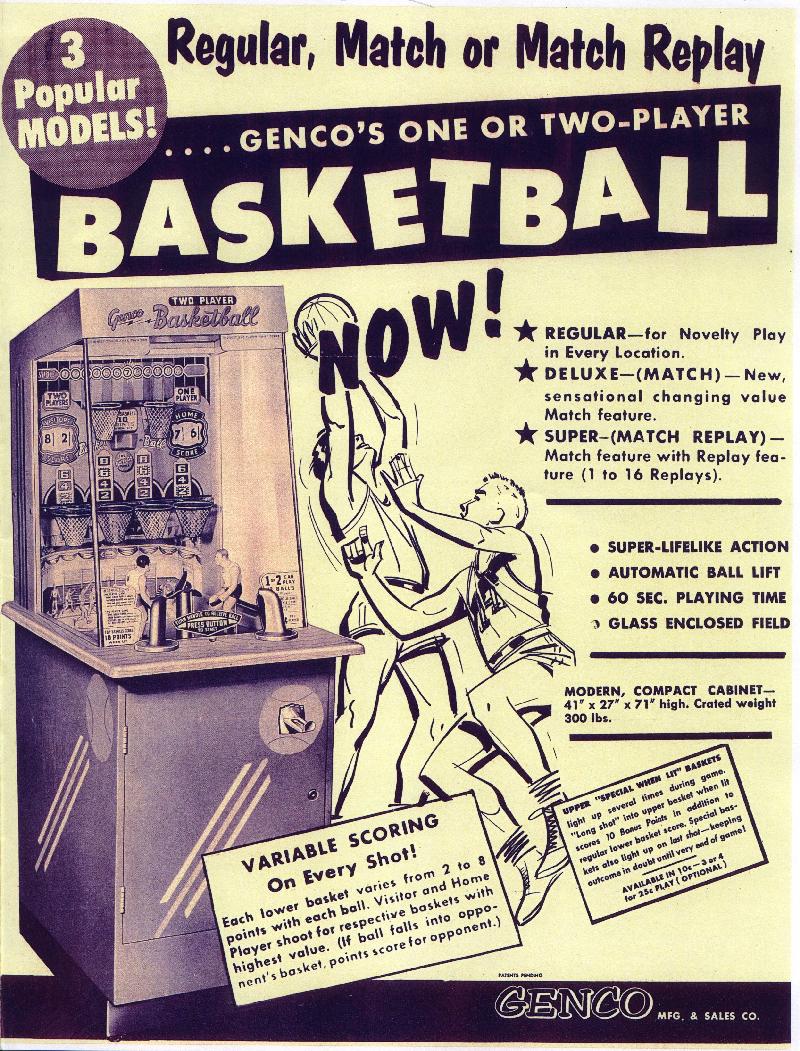
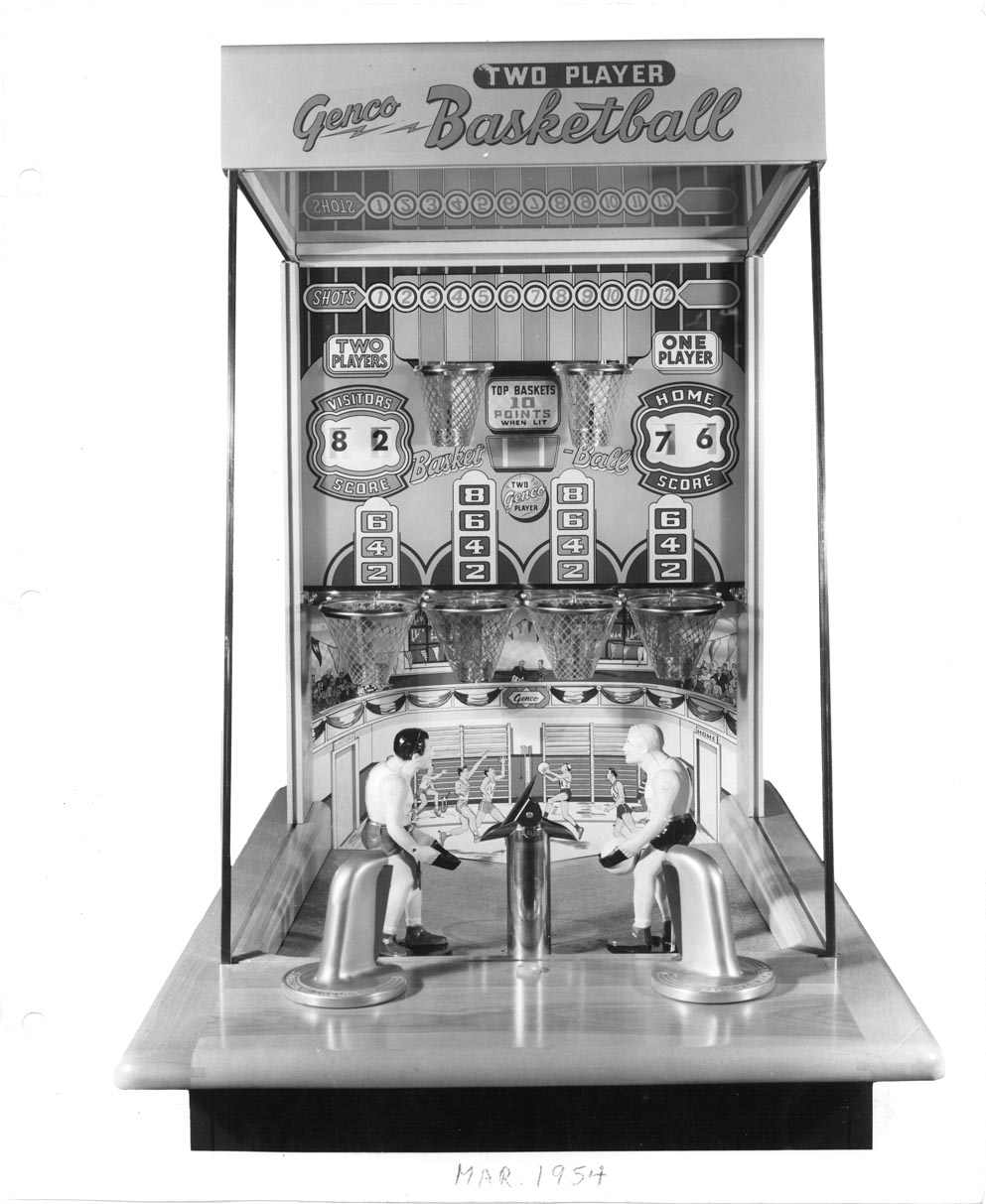
This game's cabinet is original. Notice the color of the backglass' main background
(yellowish/green), indicating this is the "deluxe" model.

Notice the color of the backglass' main background (light blue), indicating this is the "novelty" model.
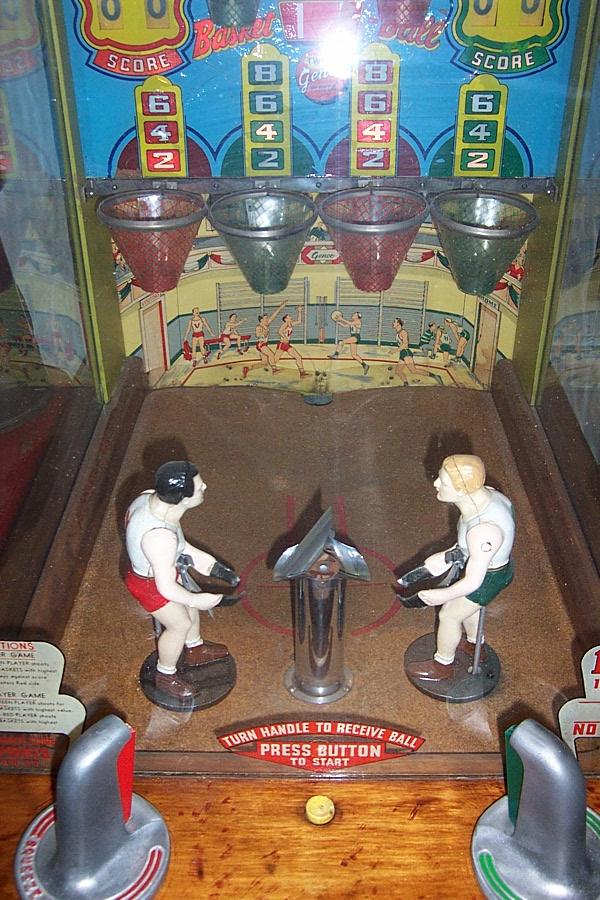
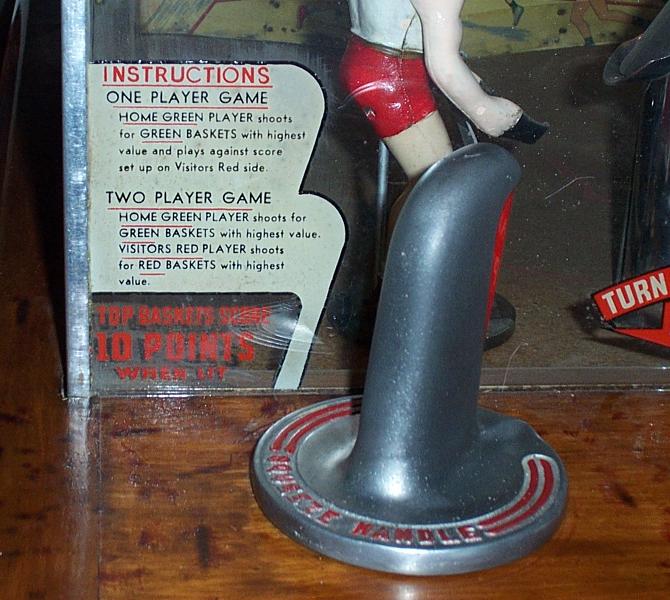
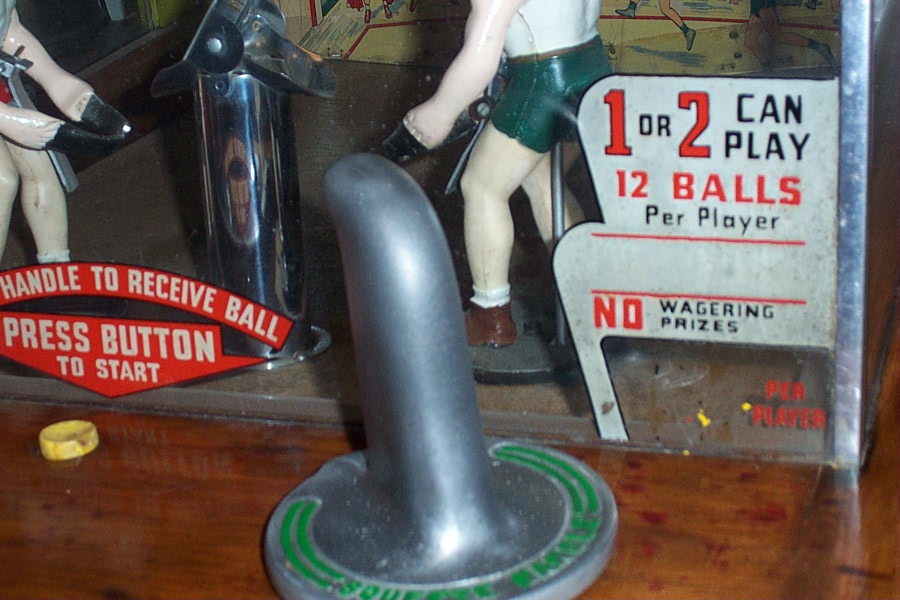
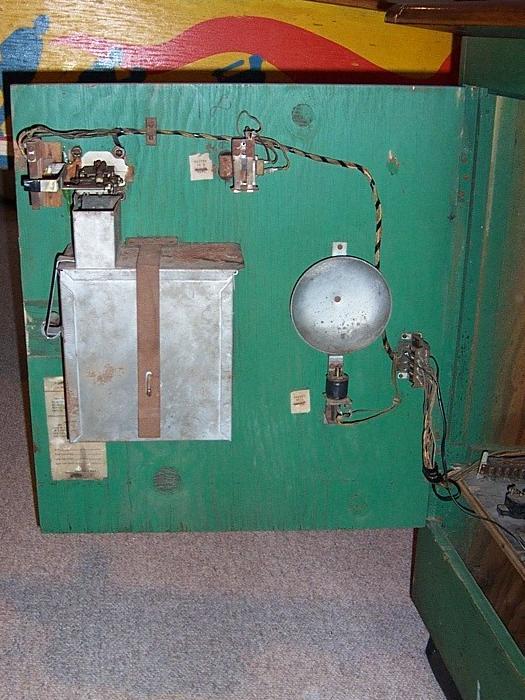
The coinbox on a Genco 2 Player Basketball.
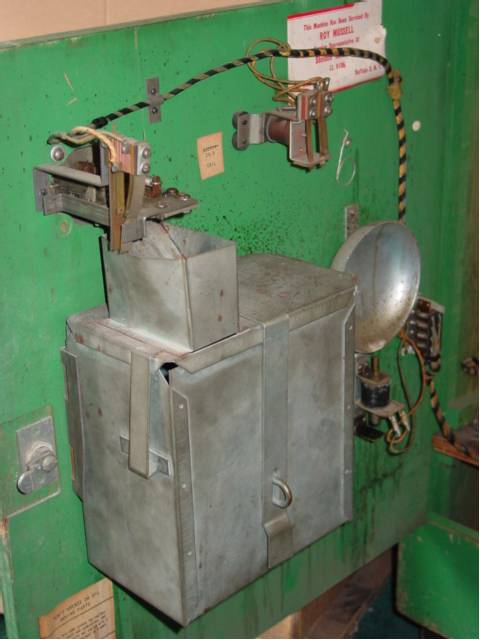
Converting the eight lower basket value lamps from #1458 bulbs to #47 bulbs.
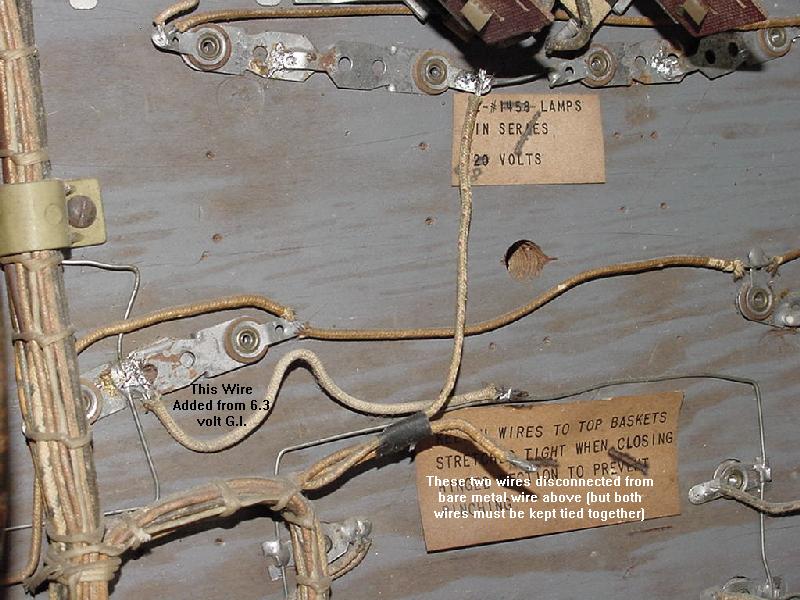
Converting the selenium rectifier to a new silicon bridge rectifier (highly recommended).
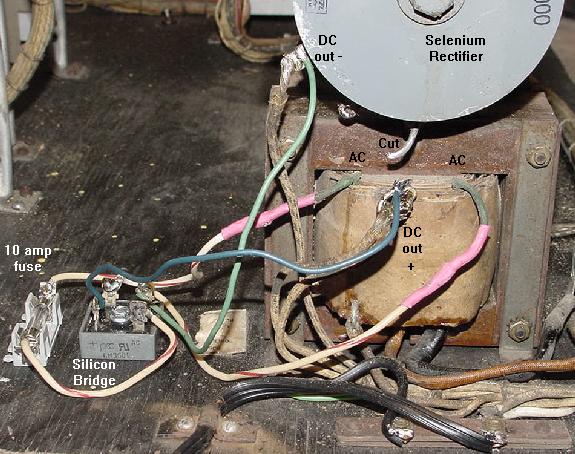
The bottom panel to the Genco SUPER 2 player basketball. This version of the game is more rare,
and schematics and information on this version are hard to come by. There are considerably more
stepper units and an whole additional reset bank in the SUPER version. If you have schematics for
the SUPER version, please send me a copy! (The more common Novelty version's schematics are
readily available.)
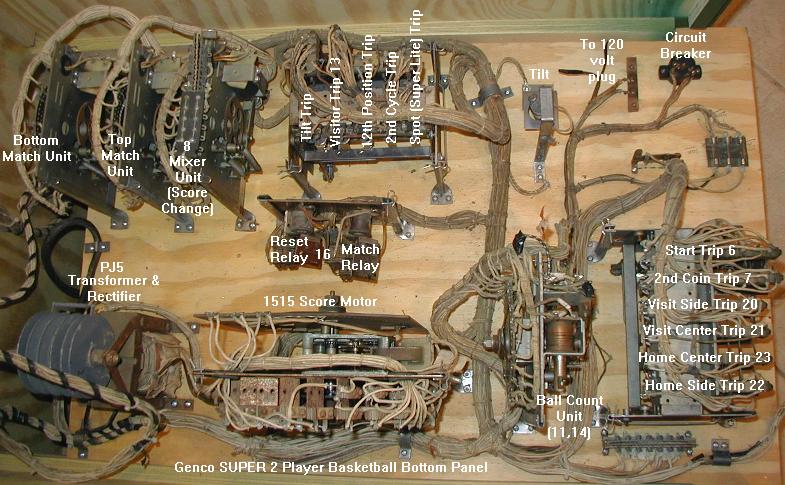
The author's Genco 2 Player Basketball after a complete restoration, including cabinet repaint.
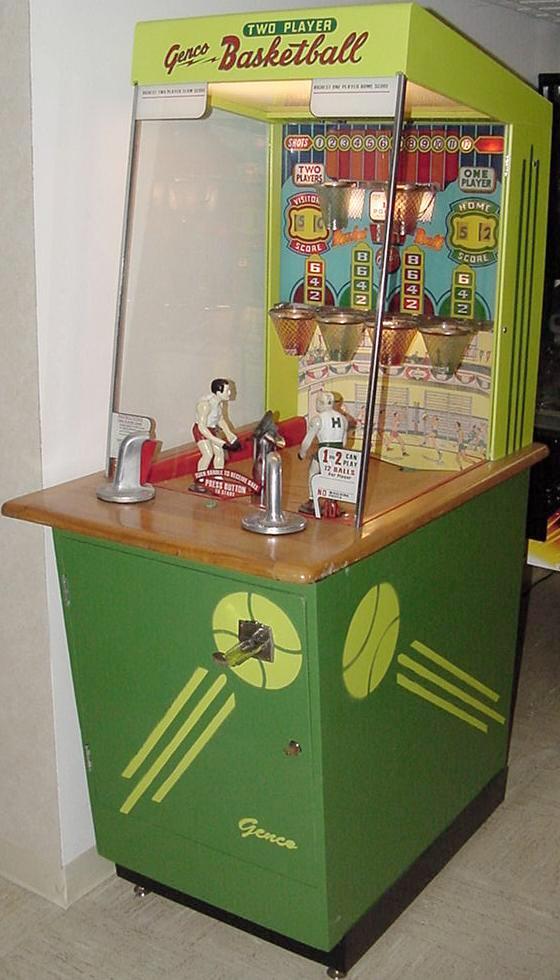
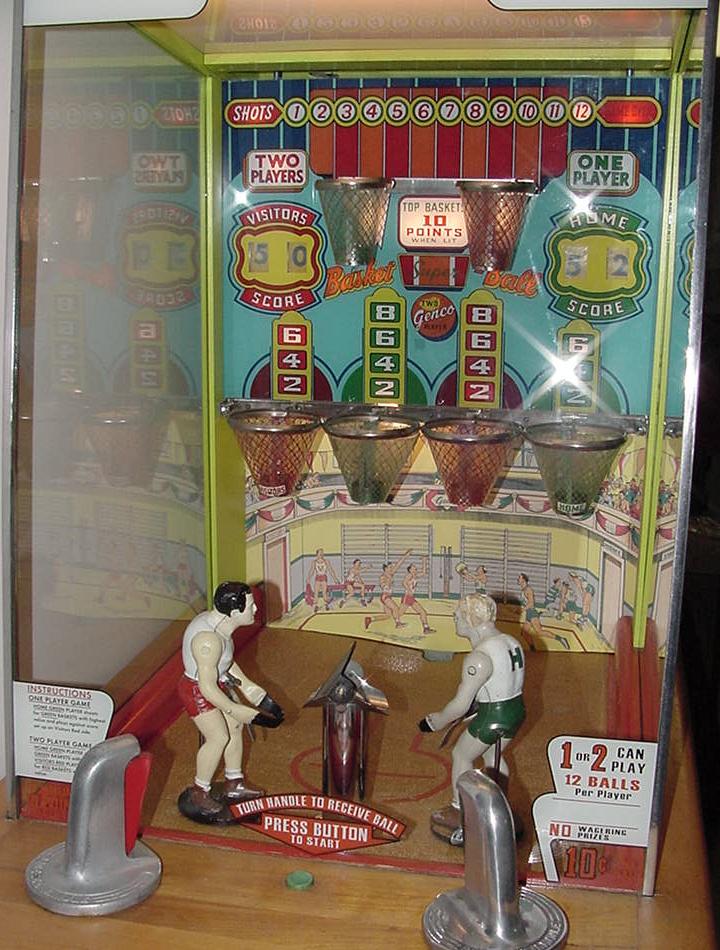
|
* Email the collector cfh@provide.net * Go to the CoinOp Baseball History index * Go to the Pinball Repair/History index |